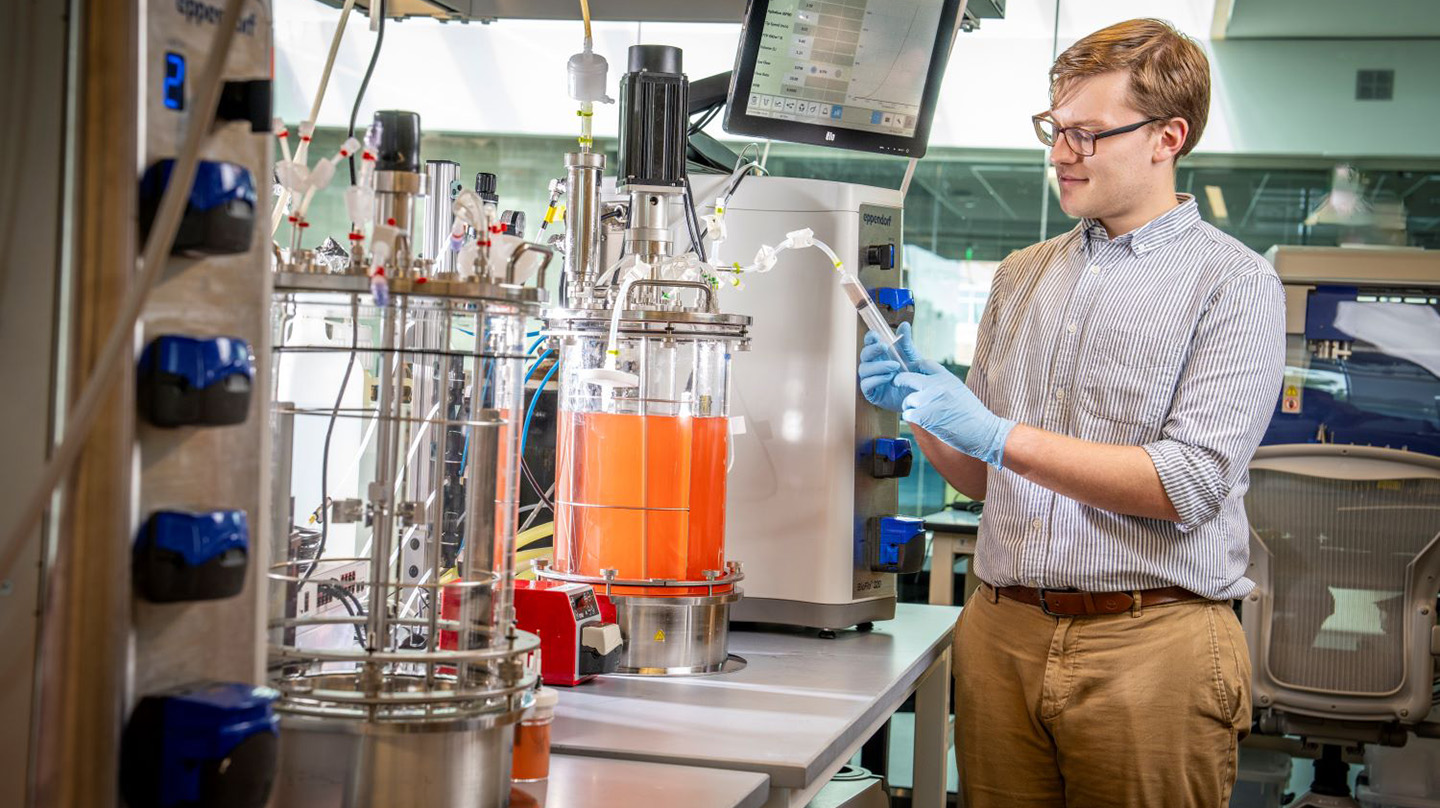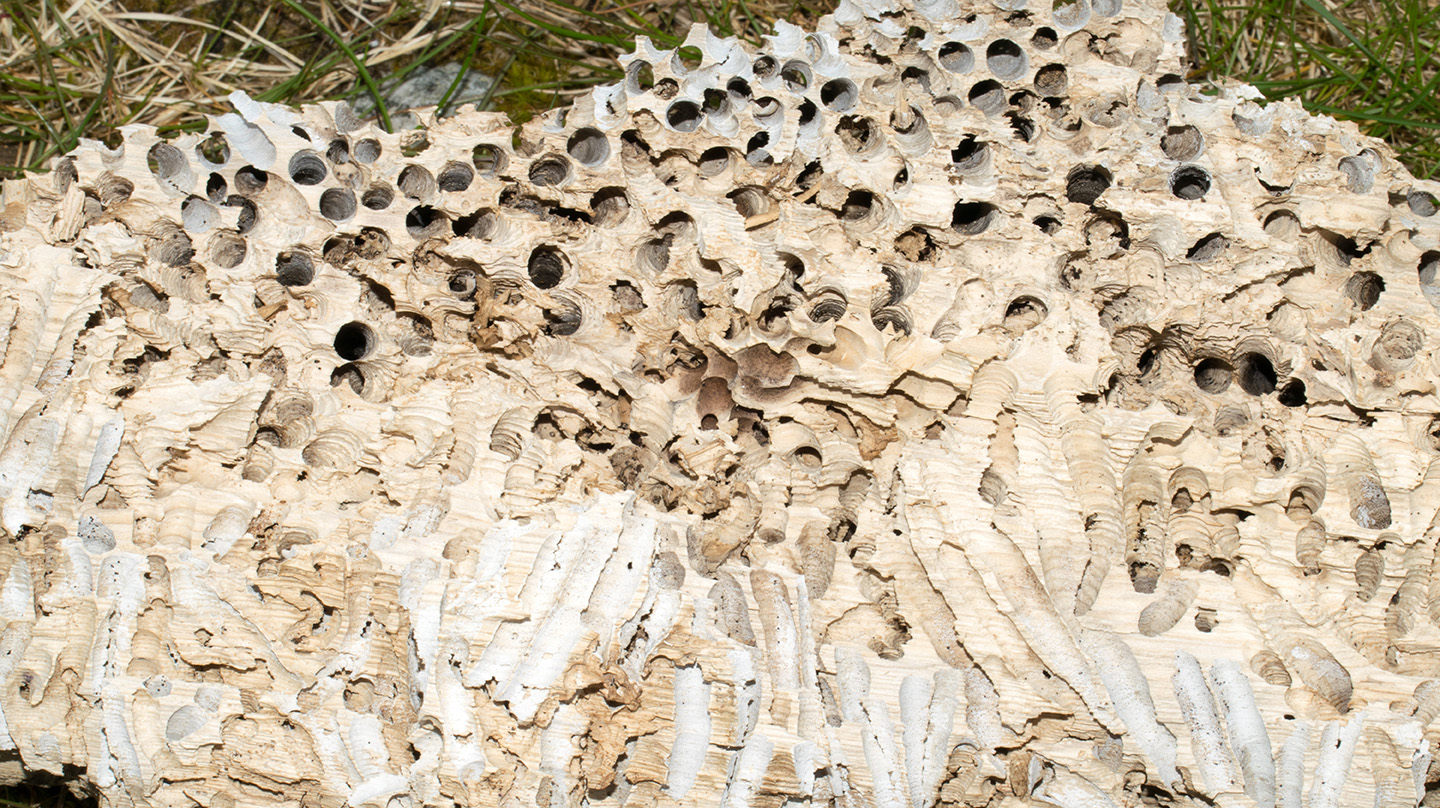News
Johns Hopkins APL Biomanufacturing Breakthroughs Bolster National Security
Biomanufacturing — the use of microbial organisms to make materials and molecules — can help solve important security challenges facing the United States, including making supply chains more secure, strengthening the defense industrial base, and producing materials for warfighters wherever and whenever they need them.
Equipped with this understanding, researchers at the Johns Hopkins Applied Physics Laboratory (APL) in Laurel, Maryland, are combining their technical expertise, creativity and national security acumen to put biomanufacturing to work, developing tangible solutions to solve these national challenges.
“We ultimately want to create bio-enabled devices that utilize the best of both worlds — biology and technology — to protect citizens, troops, our allies and the planet,” said Sarah Herman, who leads APL’s Biological and Chemical Sciences Program. “Before we can produce these systems at scale, however, we need to pinpoint desired biological components and understand how to integrate them into traditional systems. Several teams across the Laboratory are working to do just that.”
Bio-Enabled Materials and Equipment Development
One APL team is enhancing the capabilities of solid-state devices, such as cameras and sensors, by incorporating lifelike properties into them. From self-healing materials to organically powered sensors, biology can elevate technology’s effectiveness by providing unique characteristics.
“All organisms have evolved unique characteristics that allow them to thrive in their respective environments,” said Ryan McQuillen, a biophysicist and APL biomanufacturing researcher. “For example, cells adhere together to form tissues and organs, rattlesnakes have special receptors that allow them to track prey using heat signatures, and microbes can persist in some of the most extreme environments on Earth. Underlying all of these characteristics is a special class of biopolymers called proteins.”
Using synthetic biology, researchers can carefully control protein polymer sequences to tune their function, identify ways to purify and isolate them, and then understand how they can be embedded into materials and larger devices.
The team is developing a miniaturized thermal-sensing platform that uses only biological parts. The platform generates its own power using a light-driven proton pump, similar to those found in our own retinas; it senses heat signatures using snake-derived, heat-triggered receptors, and it converts those signatures into a downstream detectable output — all within in a small, fatty capsule. Such a platform could be used as a lightweight, low-power sensor for new night-vision devices.
“When we incorporate biology, we can address challenges that are impossible to solve with other domains of science,” McQuillen said. “Bio-enabled devices have the potential to revolutionize not just thermal technologies but also a variety of technologies that exist purely in solid-state electronics.”


